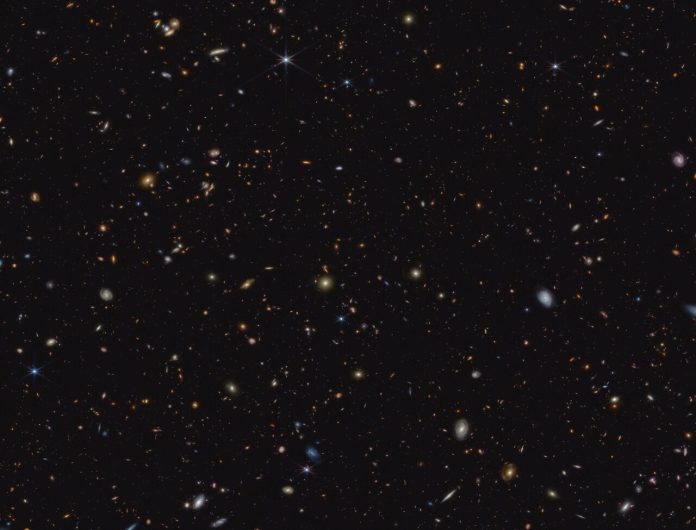
Astronomers have found a new way to study the very first stars that lit up the universe—by listening to ancient radio signals from just 100 million years after the Big Bang.
An international team led by the University of Cambridge has shown that we can learn about the size and brightness of the universe’s earliest stars by observing a faint signal called the 21-centimetre line, which comes from hydrogen—the most basic element in the universe.
This signal, which is more than 13 billion years old, was created by hydrogen atoms floating between the first star-forming regions.
The light and radiation from the very first stars changed this signal, and by studying those changes, astronomers can understand how the early universe evolved from a cold, dark place into one full of stars, galaxies, and eventually life.
The study, which uses simulations and theoretical models, was published in the journal Nature Astronomy.
Professor Anastasia Fialkov, a co-author from Cambridge’s Institute of Astronomy, explained that this research opens a new window into what scientists call the “Cosmic Dawn”—the time when the first stars and galaxies formed.
She leads the theory team behind REACH, a special radio telescope designed to detect these ancient signals.
REACH (the Radio Experiment for the Analysis of Cosmic Hydrogen) is still being fine-tuned, but once it’s fully operational, it will begin capturing radio waves from the early universe. Another major project, the Square Kilometre Array (SKA), is a massive radio telescope currently being built in South Africa and Australia.
While REACH will help detect the average brightness of these signals, SKA will map how the signal changes across the sky.
Fialkov and her team created a model that predicts how the 21-centimetre signal changes based on the mass of the first stars.
These earliest stars, called Population III stars, were much larger than most stars we see today.
The team also studied how pairs of these stars—known as X-ray binaries, where one star collapses into a black hole or neutron star—can heat up the surrounding hydrogen and affect the signal. Previous studies overlooked the impact of these X-ray binaries, but this new work shows that they are key to understanding how the early universe changed.
Unlike space telescopes such as James Webb, which take detailed images, radio telescopes collect signals too faint to image individual stars. Instead, they reveal patterns across large groups of stars and galaxies.
The findings could help scientists better understand how the universe’s first light sources formed and evolved, and give us deeper insight into the origins of everything we see today.
Source: University of Cambridge.



